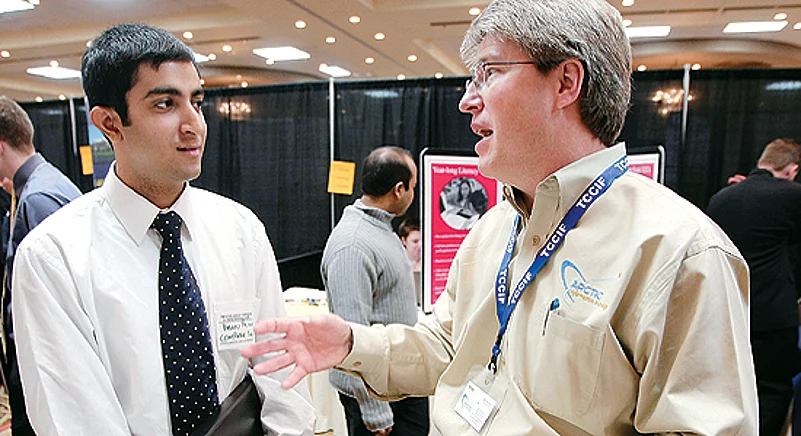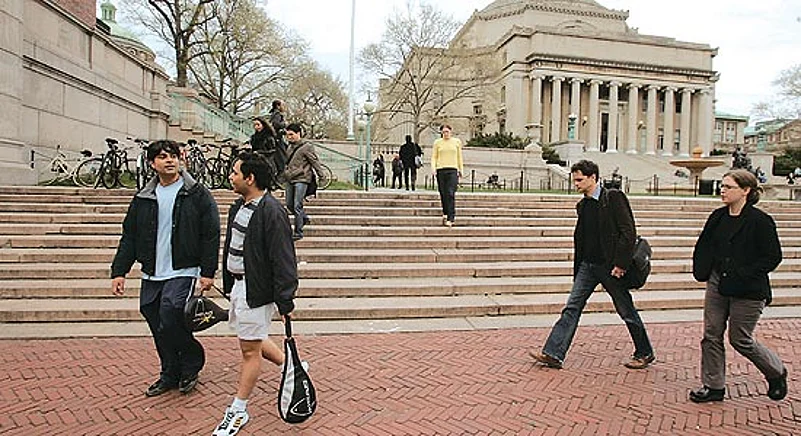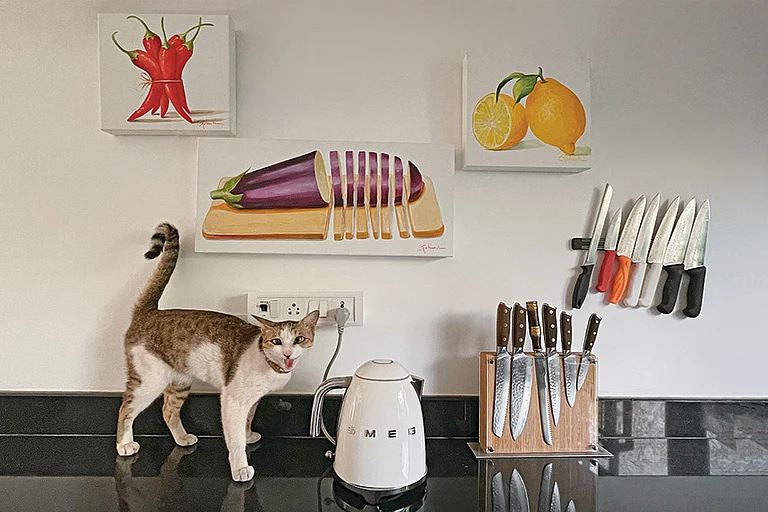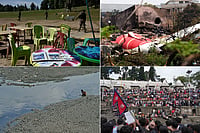Continuing Love Affair With Education
Institute for International Education’s Open Doors report in the US
- 3,000 Accredited US educational institutions
- 94,563 Students from India who studied in the US, 2007-08
- 12.8% The growth in Indian students in the US from the previous year
- 72% Percentage of them doing graduate-level courses.
- 2002 Year India surpassed China as prime contender for seats in US colleges
***
The grim prospects for loans coupled with an economy in recession have put the brakes on the avalanche of Indian students applying to US universities. At the same time, India continues to retain its position as the leading country of origin insofar as students coming to colleges in America. For those seeking global exposure at world-class institutions, the US remains a top destination—recession or not. Given the times, it’s also ironical that business and management courses remain the most popular field of study for these students.
Allan Goodman, president of the Institute for International Education (IIE), Washington, has an explanation for the growing numbers of Indian students heading to the US (up by 12.8 per cent from the previous year). It’s all about demography, he says: “A lot of young people are graduating from secondary and high schools around the world but there are not enough colleges to cater to the demands of the population.” The US, with close to 3,000 colleges and universities, is unique. “In the US, there is plenty of room to accommodate students from abroad,” says Dr Goodman, who predicts that the number of Indians in the US will climb higher in 2008-09.
It’s almost a truism that it’s the high quality of education that attracts Indian students to the US. Aditya Dada, studying for his MBA at Wharton, University of Pennsylvania, feels “the brand name of the top US schools are recognised globally. Other than the IIMs, and to some degree the Indian School of Business (ISB), there are not many Indian schools that have managed to create a global brand,” he says. Moreover, he points to the “unmatched” resources in US universities: from the number of professors per department, to the advanced electronics available in classrooms to help with the teaching.
Without a doubt, the business of business schools is booming in America. Sara E. Neher, director of MBA admissions at the University of Virginia’s Darden School of Business, says applications to business schools actually go up before a recession, as it has happened over the past several years. At Tuck School of Business at Dartmouth, Christie St-John, senior associate director of admissions, said applications for the class of 2011 have set a five-year high.
Through their spending on tuition and living expenses, international students contribute over $15.5 billion to the US economy. According to an Open Doors report—the results of a survey of international students at approximately 3,000 accredited US institutions—62 per cent of all international students get the majority of their funds from personal and family sources. So it is only natural that the US state department has been focused on outreach in key international markets including India, China, Brazil and Vietnam. That effort appears to be bearing fruit as India and China occupied the top two spots for countries sending the most number of students to the US. South Korea came in third.

Kid, are u experienced: An Indian student at an IT ‘job fair’ in the US
Of the average 240 students in each class at Tuck, says St-John, 31 per cent are international students. For the past couple of years, Indian students have made up about 20 per cent of the total of international students (7.5 per cent of the student body) at Tuck. There are currently 20 first-year students and 19 second-year students of Indian nationality at the school. In a bid to woo more of them, Tuck generally holds 2-3 events in major cities in India and “many of our professors travel to India for presentations or research and they are featured in the press there...where we hope that potential applicants will learn more about Tuck,” says St-John.
At Darden, there was a significant increase in the number of Indian students about five years ago. Since then, Neher says, the numbers have remained steady at about 8-10 per cent in a class of 309 to 333 students. Darden will host “information session” receptions in Mumbai, Bangalore and New Delhi later this month.
After the September 11, 2001, terrorist attacks, visas were a factor in the flow of foreign students to the US. A quick glance at recent statistics reveals the impact of 9/11 is a fast-receding blur. A more recent consideration has been the availability of international student loans. St-John says the “withdrawal of services” of one of the largest international student loan corporations in 2008-09 led to a “very slight decline in the number of applications from outside the US, in particular from India”. This was the norm at most graduate programmes last year. “The uncertainty over getting a loan, added to the general downturn in the economy, probably combined to make some candidates decide to wait,” she says.
Of course, for those who can afford it, the US is a no-brainer. Krunal Kapadia, who grew up in New Delhi, enrolled in an MBA programme at the University of Massachusetts in Boston because he wanted to “learn and explore outside my homeland”. But the end of university stints will bring with it the grim reality of a bleak job market. Dada and Kapadia say they worry about bagging a job after graduation. Jobs in real estate, venture capital, private equity and investment management appear to be the worst hit, followed closely by banking. “While traditionally students have used their summer internship time to explore different industries, this year most of the students plan to take the safe route and continue to apply for jobs in the fields they are most comfortable with and have a strong background in,” says Dada.
Global work experience is an immense attraction too. Vimala Raghavendran, also enrolled in the MBA programme at Wharton, says many Indian business schools tend to attract younger students with little or no work experience. “So if you’ve worked for a bit, then your only option in India is ISB,” she says.
There’s also an added sweetener now—students here can now plan a return to India to brighter career prospects. That said, in India too mindsets are changing—students who had been contemplating a US degree are now exploring possibilities closer to home. Raghavendran agrees that not as many of her friends in India are interested in studying in the US as earlier. They are looking at programmes in India and Singapore—the job situation in the US is definitely a factor, she says. But Kapadia, who heads the Indian students association at his university, says his friends from India are still coming. “There is an increase in applications even though they know about the state of the economy here,” he says.
Dr Goodman of IIE avers that he’d be surprised if the recession prevents foreign students from coming to study in America. “Indian parents who dream of sending their son or daughter to a US college will do so regardless of the state of the economy, because a US degree is still very valuable,” he says. Raghavendran echoes that opinion. “MBAs are expensive...if you go to a good school, you can still get loans for an MBA as an international student, but now you’re looking at paying back up to $1,50,000 after graduation,” she says. But, she added with the optimism true of a business student, “if you go to a good MBA programme... then the world is your oyster”.


























